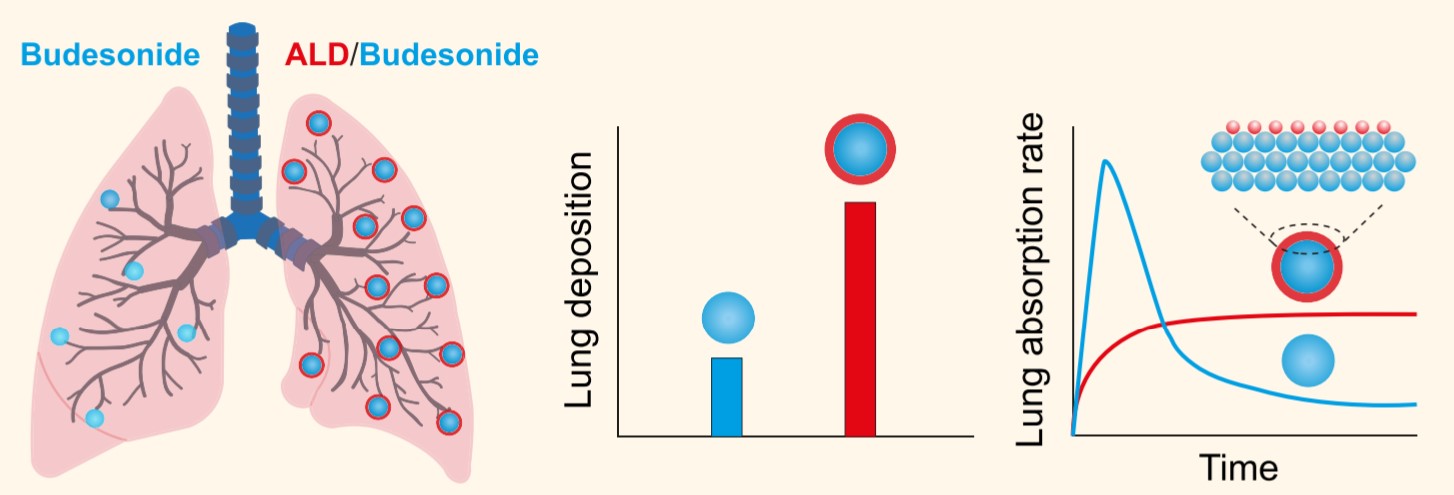Better inhalation medicine through atomic layer deposition
A publication in ACS Nano on controlled pulmonary administration of Budesonide - modified using Atomic Layer Deposition - a study by PhD student Damiano La Zara and colleagues from the Chemical Engineering department of Delft University of Technology, in collaboration with AstraZeneca.
Drug delivery by inhalation is a highly effective and widely used therapy for lung diseases such as asthma and chronic obstructive pulmonary disease (COPD). The large drug delivery surface (the alveoli) and the fast absorption enable an efficient drug delivery to the bloodstream. On the other hand, the drugs can be rapidly eliminated from the lung tissue, making their effectiveness short-lived. In addition, particle interactions and aerodynamic particle size distribution of aerosols and physiological factors such as airflow, and breathing patterns affect the uptake of the inhaled particles.
Therefore, controlled pulmonary drug delivery in terms of deposition, dissolution and absorption in the lungs is highly desirable for the treatment of chronic diseases, as a reduction of the dosage frequency and an optimisation of the powder load can be obtained. Better control of the concentration that the patient receives in the bloodstream will lead to a reduction in side effects.
In their work, the researchers show that the deposition of nanoscale oxide ceramic films on individual inhaled budesonide particles makes it possible to control drug release, i.e. the time budesonide takes to dissolve and be absorbed, and to improve aerosolisation, i.e. the amount of budesonide that reaches the lungs. In addition, initial tests indicate that these ceramic films in the low concentrations used are not harmful to lung tissue.

